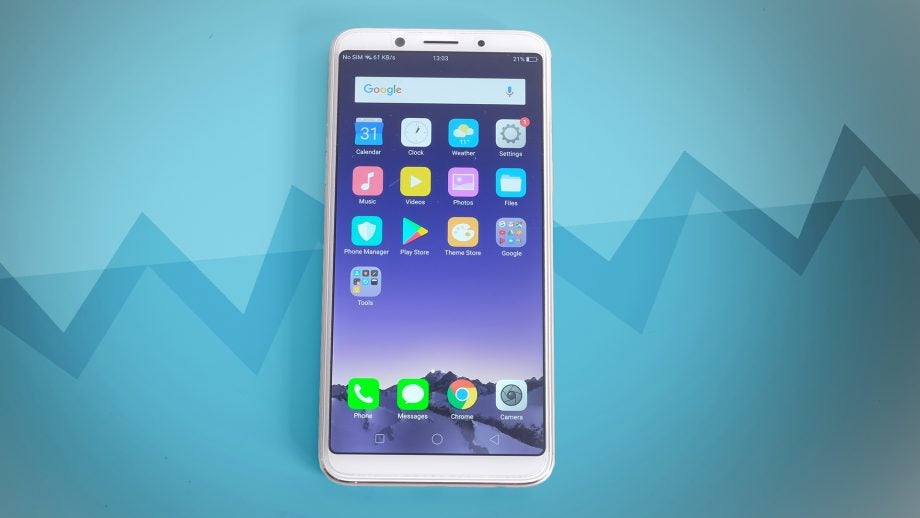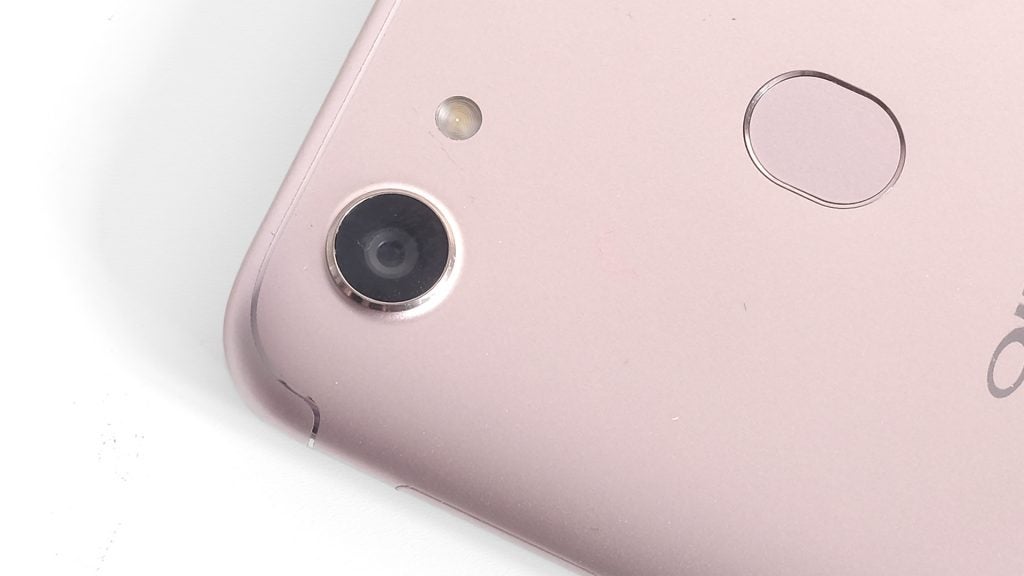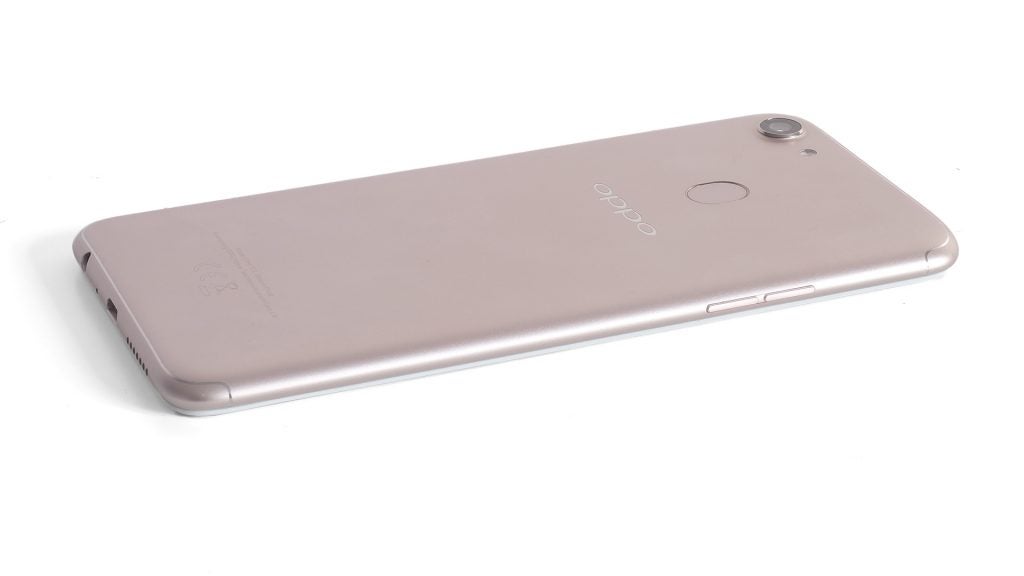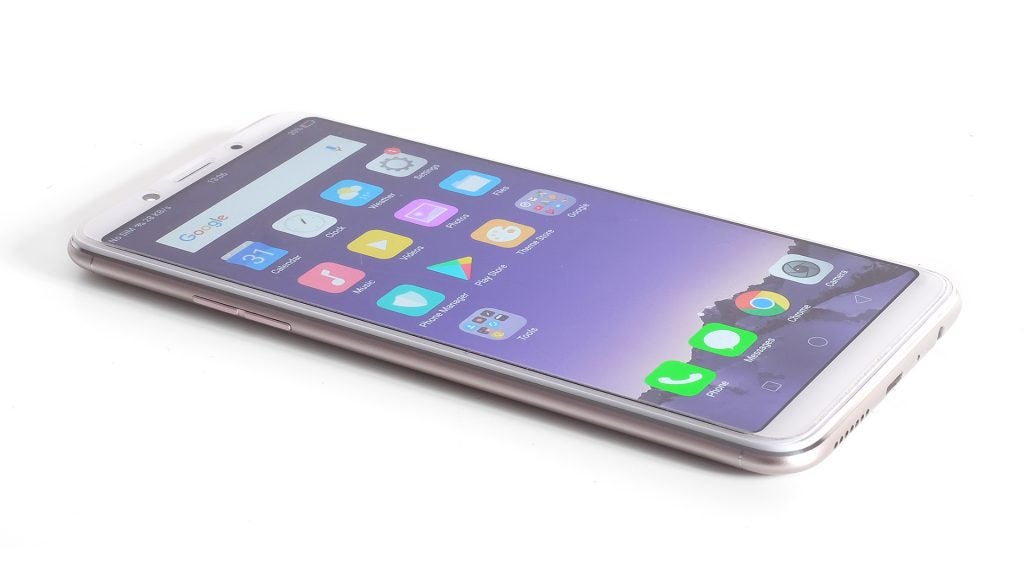Oppo F5 Review - Camera, Battery Life and Verdict Review
Camera, Battery Life and Verdict
Oppo F5 – Camera The Oppo F5 has an unusual camera setup, one with special moves outside of the dual camera norm. It has a front camera of higher resolution than the rear, with 20 megapixels for selfies and 16 for normal photos. Performance of the rear camera is acceptable for the price – and, as […]

Sections
- Page 1 Oppo F5 Review
- Page 2 Software and Performance Review
- Page 3 Camera, Battery Life and Verdict Review
Oppo F5 – Camera
The Oppo F5 has an unusual camera setup, one with special moves outside of the dual camera norm. It has a front camera of higher resolution than the rear, with 20 megapixels for selfies and 16 for normal photos.
Performance of the rear camera is acceptable for the price – and, as hoped, the front camera really is special among its peers.
Related: Best budget phones

Let’s start with the good and bad of the front camera. Speed is one of the Oppo F5 camera’s strengths. Where the Moto G5S Plus is a little slow and laggy, the F5’s camera displays little shutter lag here – even if you use the HDR mode.
There’s a short post-shot processing delay, which slows the shot-to-shot speed to just under a second. However, the Oppo F5 is definitely a phone that you’ll be able to whip out for a spur of the moment shot – without a 90% chance of then missing it.
Typical of Oppo, the camera app is very much like that of Apple, with thumb-friendly controls to each end of the screen.
Some of the Oppo F5’s hardware is sound, too. It has a fast f/1.8 lens on the back, which helps with low-light performance, particularly since the lens isn’t stabilised.
Related: Oppo Reno 10x Zoom review
Digging into the phone’s specs, it uses a Samsung S5K3P8 sensor. This is also present in the Samsung Galaxy A7, and by the OnePlus 3T as its selfie sensor. It’s a 1/2.8-inch sensor with 1.12 micron pixels.
In good lighting, then, the Oppo F5 is capable of capturing some great detail-rich pictures. However, on occasion it struggles. Even in daylight, fine detail can look dithered and general sharpness isn’t the best. There are times that focus is unreliable. Make sure it has definitely locked on before you start shooting.
Image quality at night isn’t too bad for a non-stabilised phone, although there’s the typical softening and loss of detail you’d expect from a camera with small sensor pixels. Here are some images captured with the Oppo F5:





Relatively dark scenes often look clear, but are rarely super-sharp

This scene is begging for its mid-tones to be lifted, which you’ll have to do post-processing

The front camera uses a Sony IMX376 sensor. It’s the same sensor that features in the Vivo V5, which is no great surprise when you discover that Vivo and Oppo are all owned by the same parent company: BBK Electronics.
Oppo has been more-or-less successful in what I’d expect is its aim here: to take selfies that don’t look like they’ve been taken with a selfie camera. Because, of course, front cameras are traditionally much lower-spec than rear ones.
Selfies taken in a well-lit room, or outdoors, will be full of detail –and, like the rear camera, shutter lag is minimal. It’s a fun camera to use.
The Oppo F5’s selfie camera even lets you use background blur, although the phone doesn’t have the dual cameras normally required to achieve such effects. Instead, it simply recognises your head and shoulders and blurs around them.
The final result is pretty good – although the camera does get a bit confused by headphones. That aside, it adds drama to shots and makes your face “pop” in pictures. And no-one cares that you own a pair of Beats, by the way.

Oppo F5 – Battery life
While the Oppo F5 has quite a lot of up-to-date sounding elements, it still uses a micro-USB socket to charge its 3200mAh battery – rather than the newer USB-C type. However, it does have moderately fast charging; it takes a little under two hours to charge fully.
Battery life is solid, with a full day of fairly extensive use completely realistic. While I normally charge my phone every night, at one point during testing the Oppo F5 lasted until around midday on day two.
I came to the Oppo F5 after using the BlackBerry Motion and the Doogee Bl7000 with its 7060mAh cell, though – both show what truly impressive battery life is about.
This phone lasts long enough to ensure stamina isn’t even close to being an off-putting issue, but not long enough to make it a key selling point.

Why buy the Oppo F5?
The Oppo F5 is a bit of an oddity. It has a small-bezel ultra-widescreen display and a super-high-resolution selfie camera. Plus, Oppo’s ColorOS software continues to diverge from the design style seen in the vanilla version of Android.
Aside from some camera niggles, the main issue for Oppo is that similar-price phones using the Snapdragon 625 and 630 processors are better for gaming. Although, to be fair to Oppo, every game I tried on the phone was perfectly playable.
Also, the plastic rear of the Oppo F5 could prove a turn-off, especially when metal finishes are available at this price from the Moto G series and Honor phones. However, the F5 looks decent, and so I can’t say that this was a turn-off for me.
With all this in mind, I’d personally recommend the Moto G5S Plus over this phone. But the Oppo F5 isn’t a bad option, particularly if you like taking selfies.
Verdict
A solid budget Android with an impressive selfie camera and ultra-wide screen.


